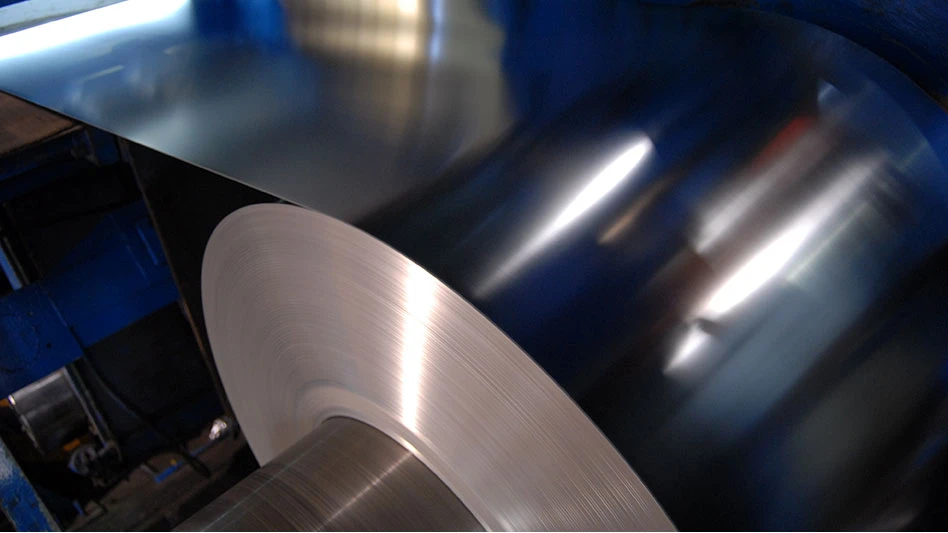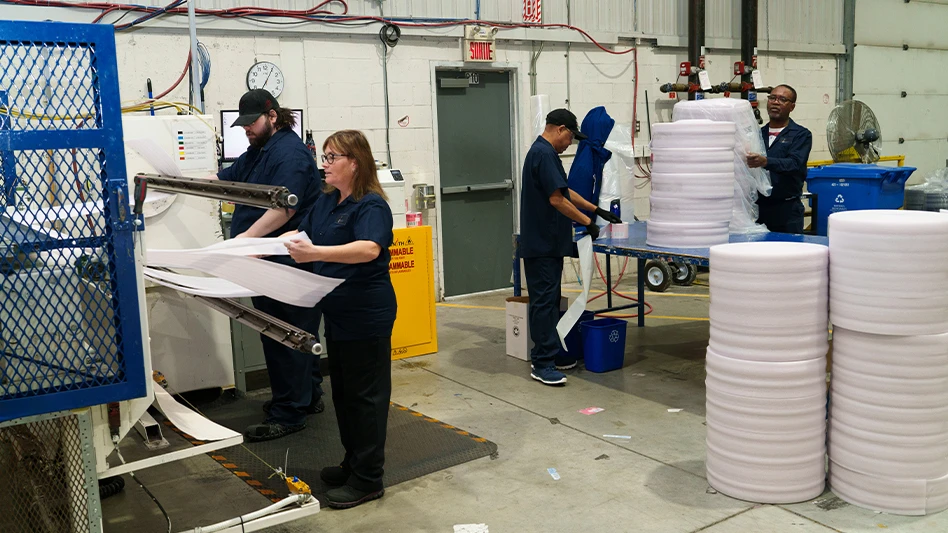Operators of Municipal Recycling Facilities (MRFs) can be confronted with a diverse stream of materials. With commingled collection growing as a trend, the need for mechanical sorting and separating equipment for containers has grown.
An impressive number of different systems and pieces of equipment are available from manufacturers for MRF operators and other processors to choose from. Systems have been designed using water, streams of air, and optical scanning to help turn diverse streams of material into separated commodities that can be shipped to the consumers.
PATIENCE WITH PLASTIC
The successful recycling of plastic containers has been a challenge for recyclers for a number of reasons, including the existence of more than a half-dozen types of resins used to make plastic bottles and jugs.
Within the packaging arena, the plastic industry has enjoyed a great deal of success in the last two decades. An increasing number of products in the food, beverage, and cleaning categories have shifted from metal or boxboard containers to plastic. While certain resins—most notably PET #1 and HDPE #2—have gained the greatest amount of packaging market share, makers of other resins (including polypropylene #5 and PVC #7) have also secured container-making contracts. The result is that while municipal recycling programs may ask for just containers made from #1 and #2, for instance, they will likely receive their fair share of bottles made from other resins, which can then become “contaminants.”
Manual sorting is still a part of most operations, with pickers looking for containers marked with resin numbers that are not part of the desired stream. But larger plastics recycling operators have taken advantage of automated systems designed specifically for plastic sorting and separation.
P&R Environmental Industries Inc. (PREI), Youngsville, N.C., takes in material from MRFs throughout its region in toll processing arrangements. PREI uses equipment made by Magnetic Separation Systems Inc. (MSS), Nashville, Tenn., to sort and separate the containers shipped to it, some of which come in unsorted bales.
The baled materials are fed into a “de-baler” and then sent through the MSS BottleSort system, which uses optical density sensors to sort and air streams to separate containers by resin type and/or by color. Clear and opaque containers of the same resin are usually marketed separately, often to different consumers.
While PREI employs some of the most sophisticated sorting equipment on the market, it has by no means eliminated the need for manual sorters in its bottle processing lines. Some of the material the company takes in from the MRF is dirty enough that the sensors sometimes read clear cartons as opaque.
Plastic flake is also mechanically sorted using different equipment from MSS. An MSS flake-sorting system used at PREI can sort up to 3,600 pounds of PET flake per hour, pulling out any stray pieces of PVC, which is considered a contaminant by secondary PET resin makers.
The sophisticated equipment has become increasingly necessary as sorting at the collection end—and even at MRFs—continues to fade as standard practice. “There’s a movement in the MRF industry toward commingling, away from sorting,” says PREI president Gary Pratt.
That shift in MRF attitudes has made it possible for PREI to use its sophisticated sorting equipment to gain toll processing contracts. “Our volume is up significantly,” says Pratt. “We’ll be processing contaminated flake for the industry, so we’ll have volume.”
GLASS MENAGERIE
With plastic, the challenge lies in separating by resin. When it comes to glass, most consumers of glass cullet are concerned about the color of their incoming shipments.
The three color types most frequently used in glass food and beverage container making are clear, amber and green. In general, when cullet is being used to make any of those types of glass, the inclusion of the other two in a shipment is considered unwelcome.
Several systems have been developed by companies such as MSS and Countec Recycling Systems Inc., Des Moines, Iowa, that sort glass by color.
One of the systems marketed by Countec uses optical technology imported from Italy and a company known as SEA. European specifications for the reuse of glass cullet have historically been tougher than those in North America.
While sorting by color is one of the important considerations for glass recyclers, removing contaminants from the stream of glass is also a vital consideration. Eliminating ceramics, in particular, is important since ceramic items finding their way into a glass-making furnace can potentially cause an explosion.
In Rosedale, Md., Partners Quality Recycling Services Inc. has found the processing of glass to be much less of a headache after installing four glass sorting and separating systems made by MSS.
Employees at the MRF used to have to handle glass containers with caution, avoiding breaks and making sure that intact glass jars and bottles stayed in three separate streams sorted by color. Now the facility employs a network of shakers, crushers and screens—with the key sorting component being computerized optical scanners and activated air streams that sort the broken glass pieces by color.
The MRF’s operators say their cullet is much more marketable now that the systems are in place, and they are able to market virtually all of the glass that makes its way into the MRF. Before the MSS equipment had been installed, glass that was broken could not be marketed with the unbroken containers that were being shipped out, so instead were land-filled.
Josh Bickman, marketing director for MSS, says the glass processing systems they have designed have been proven to increase the profitability of glass recycling operations.
The company’s Glass ColorSort system can be equipped with magnets at the front end to remove any ferrous contaminants. The crushed glass eventually passes by a series of transmitters that scans the stream thousands of times per second to distinguish between clear, green and amber cullet. A series of nearly 100 air jet ejectors then separates the three glass colors into separate cullet streams.
According to Bickman, the Glass ColorSort system has a rated throughput capacity of five tons per hour. The company claims that “typical product purity is greater than 90%” for users of the system.
The imaging technology employed in mechanical sorting and separating devices used in both glass and plastic recycling has become increasingly sophisticated. Whether using infrared sensors, X-rays, or other optical technology, sensors can now identify containers or smaller pieces of material (plastic flake or glass cullet) based on resin type or color characteristics. The information taken in by the sensors is then routed to a computer that locates the position of a “scanned” piece of material and can then trigger a carefully directed blast of air that moves the identified material off of one conveyor and onto a different conveyor.
Recycled materials compete on all fronts with primary materials industries that show no signs of willingly giving up market share. It is a situation that should drive recyclers and equipment manufacturers to keep researching and developing new mechanical sorting and separating technologies to produce the purest possible product.
The author is the editor of Recycling Today.
Sidebar
A Canny Solution
Harnessing the power of magnetic separation is something that is not reserved for the large tonnage scrap processors. Processors of materials generated by municipal recycling collection programs can also use magnetic devices as part of their sorting and separating methods.
Magnetic machines such as the Can Pak CC1207 from CP Manufacturing, National City, Calif., are marketed directly to MRF operators as a means of separating steel cans from aluminum ones. The CC1207 sorts up to 2,500 pounds of aluminum cans per hour using a 12-inch wide conveyor belt that carries cans over a magnetic pulley.
For scrap yard operators accepting aluminum UBCs but not tin-plated steel cans, the manufacturer suggests using the CC1207 before making payment on incoming loads of UBCs.

Explore the May 1999 Issue
Check out more from this issue and find your next story to read.
Latest from Recycling Today
- Nucor names new president
- DOE rare earths funding is open to recyclers
- Design for Recycling Resolution introduced
- PetStar PET recycling plant expands
- Iron Bull addresses scrap handling needs with custom hoppers
- REgroup, CP Group to build advanced MRF in Nova Scotia
- Oregon county expands options for hard-to-recycling items
- Flexible plastic packaging initiative launches in Canada





